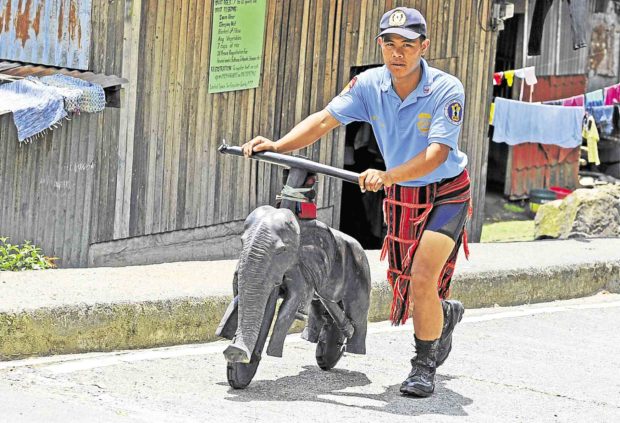The wooden scooter becomes art
Even the most common household artifact has now become an expression of Ifugao art. Tourists return for the Imbayah Festival to watch a 7-kilometer race of hand-carved wooden scooters from the Rice Terraces View Point to the town plaza in Poblacion.
Garbed in their ethnic attire and sans any helmet, the daredevils negotiate the winding concrete road with a speed of 50 kilometers per hour.
Since the first race in 2005, the wooden scooters have become the major tourist draw of Imbayah. They have become so popular that woodcarvers-turned-racers have made a living by selling and renting these to tourists.
Depending on its make and design, a scooter can sell for at least P10,000, according to Robert Duyugen, 49, one of the first woodcarvers to race on his specially designed scooter.
According to one account, a scooter was sold to former first lady Imelda Marcos for P25,000.
Article continues after this advertisementHauling firewood
Article continues after this advertisementThe first scooters were developed in the 1970s to haul firewood and “palay,” said Jose Campol, 59, a member of the Banaue Scooter Racing Association.
These indigenous vehicles evolved from the “tal-lakan,” a four-wheel cart that was also used to ferry mostly kitchen items, he said. And since these did not have brakes, accidents often happened, he added.
When motorcycles became a preferred mode of transport in Ifugao, woodcarvers installed foot pedal brakes on their scooters.
Because of the wooden scooters’ newfound popularity, woodcarvers use these to showcase their craft. Some scooters were shaped into horses, dragons, elephants and tigers, while others were decorated with carabao horns and feathers.
The new shapes were based on tourist demand. “Some tourists prefer the plain scooters, while others like flashy ones shaped into animals,” Duyugen said. —Karlston Lapniten
